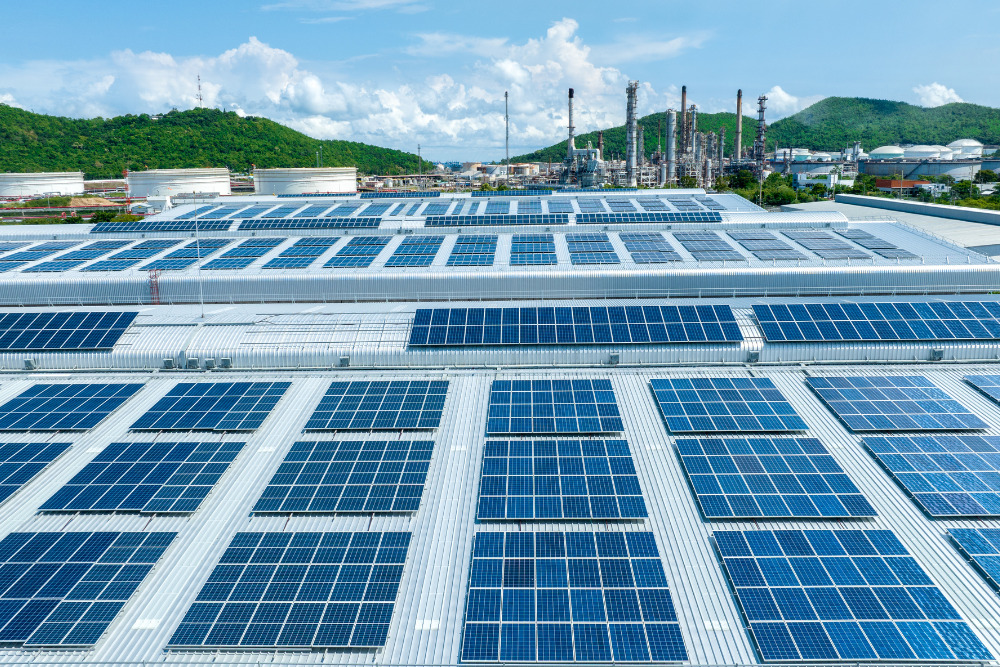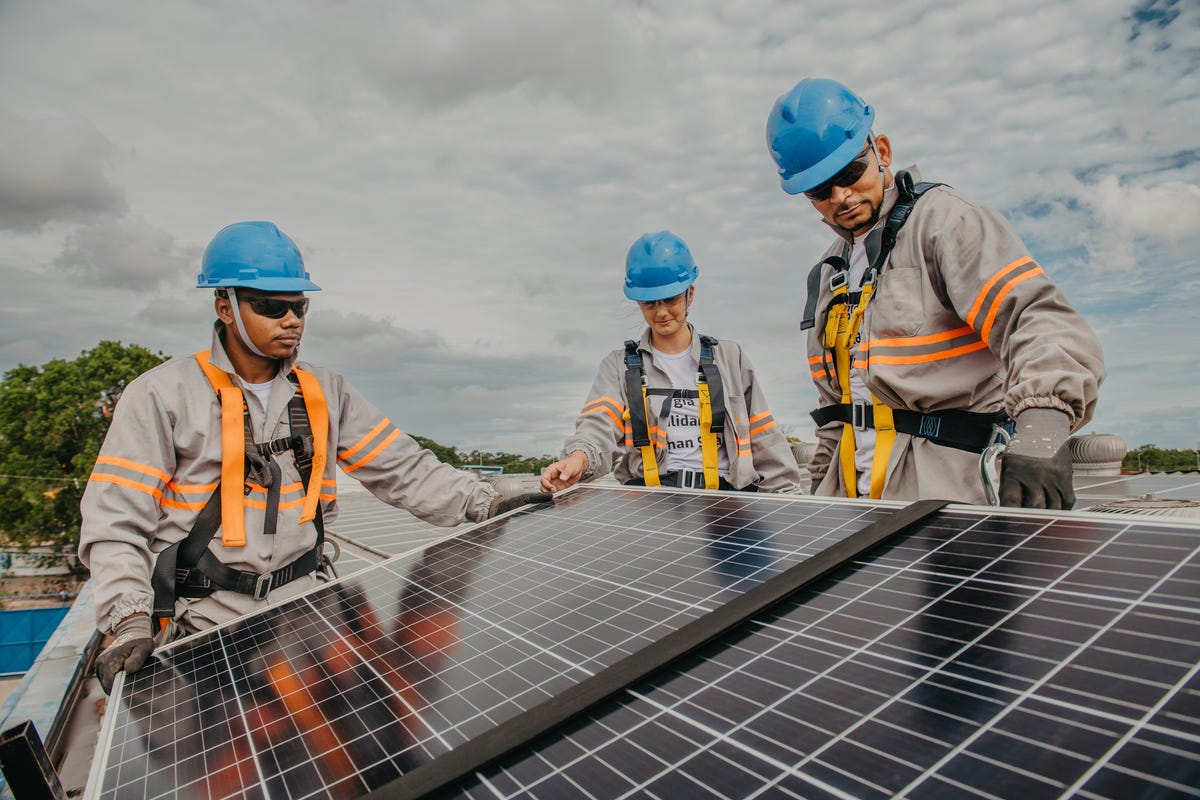Commercial Solar Panels Virginia Fundamentals Explained
Commercial Solar Panels Virginia Fundamentals Explained
Blog Article
Solar Power Virginia: Lumina Solar Specializes In Providing Advanced Photovoltaic Solutions For Houses And Companies
History and Establishing
Have you ever wondered how a solar panel company springs from a mere trigger of inspiration into a powerhouse of renewable resource? It frequently starts with a vision-- one fueled by a blend of development, determination, and a pinch of serendipity. The journey of lots of solar companies mirrors the advancement of the technology itself: from large, inefficient panels to sleek, high-efficiency marvels utilizing the sun's bounty.
The Early Days
In the late 20th century, when solar energy was still a specific niche principle, leaders planted seeds for what would end up being a worldwide movement. Imagine a small workshop filled with curious engineers, relentlessly try out photovoltaic cells. Their enthusiasm was palpable, typically driven by a desire to combat climate modification and lower reliance on fossil fuels.
One such anecdote has to do with a founder who, influenced by an outdoor camping journey, realized that even in remote areas, the sun could power necessary devices. This easy observation triggered a company's mission to democratize access to tidy energy.
Establishing Principles

- Innovation: Continuously pressing the borders of solar innovation to improve efficiency and sturdiness.
- Sustainability: Committing to eco-friendly manufacturing and decreasing carbon footprints.
- Ease of access: Making renewable resource solutions economical and useful for daily users.
Turning points in Development
| Year | Key Occasion |
|---|---|
| 1985 | Company founded in a small garage, concentrating on research study and development. |
| 1995 | Very first commercial solar panel product introduced, acquiring regional attention. |
| 2005 | Broadened to worldwide markets, welcoming worldwide renewable energy goals. |
| 2015 | Introduced advanced solar panel innovation with improved energy conversion. |
Isn't it interesting how these incremental actions, typically ignored, shape the energy landscape today? The solar panel company story is not just about innovation; it's about an unrelenting quest for a brighter, cleaner future.

Developments in Photovoltaic Panel Technologies
Ever seen how some photovoltaic panels gleam brighter and last longer? It's not magic; it's the science of photovoltaic effectiveness. Modern photovoltaic panel business invest greatly in innovations like bifacial cells, which capture sunlight from both sides, enhancing energy harvest without expanding roof space. Have you ever wondered why some panels carry out much better on cloudy days? That is because of advances in thin-film solar innovation, which grows under diffused light conditions.
Product Variations Customized to Unique Needs
One size never fits all. Solar panel suppliers now use:
- Monocrystalline panels for optimum performance and streamlined visual appeals, perfect for space-constrained roofs.
- Polycrystalline panels, which use a cost-effective alternative without sacrificing too much output.
- Building-integrated photovoltaics (BIPV), merging solar tech seamlessly into architectural elements like windows and exteriors.
Choosing the right product isn't almost in advance cost; it has to do with matching your environment, energy objectives, and long-term cost savings. Homes shaded by trees require panels that excel in low-light circumstances, something numerous overlook till energy expenses climb up unexpectedly.
Technical Tips for Optimum Choice
- Assess the temperature coefficient-- lower values imply panels lose less effectiveness on hot days.
- Search for panels with enhanced anti-reflective coverings to optimize light absorption.
- Think about the panel's warranty not just for flaws, however for guaranteed power output over decades.
- Don't ignore the importance of the inverter innovation coupled with the panels; it can make or break your system's efficiency.
Beyond Panels: Emerging Trends
Picture photovoltaic panels that adjust their angle instantly to chase after the sun-- tracking systems are becoming more accessible, increasing yield substantially. Or solar tiles that blend invisibly into your roofline, transforming your home into a quiet, self-sufficient power generator. These innovations are reshaping what a solar panel company offers-- not just products, but integrated energy options.
Market Presence and Global Operations
Ever wonder why some solar panel business seem to sprout up in every corner of the world while others barely make a ripple? The difference lies not simply in technology but in mastering the art read more of browsing diverse markets. Broadening worldwide is like planting seeds in various climates-- you should comprehend each environment's special conditions to prosper.
Take, for example, the detailed dance of logistics and supply chain management. Shipping panels midway across the world isn't almost range; it has to do with timing, customizeds, tariffs, and adjusting to local need variations. A business with robust global operations prepares for these variables, guaranteeing panels show up on schedule without inflating expenses. This foresight is no small accomplishment and often separates market leaders from fans.
Secret Methods for Expanding Market Existence
- Localized manufacturing: Establishing production centers near target markets minimizes shipping delays and import intricacies.
- Strategic collaborations: Teaming up with regional companies accelerates market penetration and builds trust.
- Adaptive product design: Customizing solar panel tech to weather, sun intensity, and infrastructure subtleties enhances efficiency and acceptance.
What about the human element? Solar panel companies running globally should reconcile cultural distinctions and regulative subtleties without losing sight of their core mission. What works in a sun-drenched desert might falter in a humid seaside region. In some cases, the most ingenious option is simply listening-- taking in local insights to fine-tune technology and technique.
Professionals typically encourage a phased rollout instead of a shotgun expansion. Why run the risk of overextension when measured growth develops sustainable momentum? Scaling wisely indicates balancing ambition with functional durability - Solar Panel Company. After all, in the race for sustainable energy supremacy, patience can be as valuable as speed
Environmental Effect and Sustainability Practices
When photovoltaic panels initially emerged, lots of assumed they carried absolutely no environmental luggage. However, the reality is more nuanced. The production of photovoltaic cells includes unusual earth metals and energy-intensive procedures, which can leave a substantial carbon footprint before the panels even reach rooftops. The real ecological expense depends greatly on the sustainability practices used by the photovoltaic panel business throughout the lifecycle of their products.
How typically do we stop briefly to consider what occurs to photovoltaic panels at the end of their beneficial life? Unlike batteries or electronic devices, solar panels can last 25-30 years, however disposal and recycling pathways remain underdeveloped in numerous regions. A company committed to reducing ecological harm will have a robust prepare for recycling photovoltaic materials, restoring valuable silicon, glass, and metals to avoid landfill accumulation.
Secret Sustainability Techniques
- Utilizing low-impact production strategies that reduce water and energy intake.
- Executing closed-loop systems to recycle production waste back into brand-new panels.
- Engaging in transparent supply chain audits to guarantee ethical sourcing of raw products.
- Creating panels for much easier disassembly to assist future recycling efforts.
It's worth noting that some solar companies have actually originated ingenious methods, such as integrating biodegradable components or utilizing less toxic chemicals throughout fabrication. This not just lowers environmental strain but likewise sets a precedent for the market. The question remains: can the solar market really pivot towards a circular economy model without compromising efficiency or affordability?
Specialist Tips for Examining Sustainability
- Ask about the company's commitment to carbon-neutral production and whether they balance out emissions.
- Examine if they partner with accredited recycling facilities dedicated to solar panel waste.
- Try to find transparency reports detailing environmental impacts and sustainability objectives.
- Consider the longevity and warranty of panels as an indirect measure of resource efficiency.
In the end, choosing solar energy ought to suggest more than simply slashing electrical energy bills; it has to do with supporting a future where energy is harvested responsibly and waste is thoughtfully handled. Solar panel companies that welcome this philosophy not just illuminate homes however likewise cast a brighter light on sustainable development.
Report this page